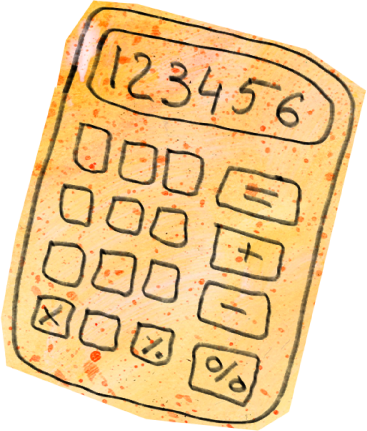Invoicing or working with a tax card?
Information and tips about the different sources of income and various forms of work in the arts and culture sector.
By: Petri Katajarinne, lecturer, Humak University of Applied Sciences
Information and tips about the different sources of income and various forms of work in the arts and culture sector.
By: Petri Katajarinne, lecturer, Humak University of Applied Sciences

In arts and culture, it is common that methods and types of work vary and that an artist receives income from several sources. Income can generally be divided into wage income and business income. However, in today’s Finland, this division has become blurred, and there are now other types of self-employment as well. For example, in addition to freelancer work, which many are familiar with, there is now the concept of ‘light entrepreneurship’. You may have also heard of ‘multi-employment’, which enables employees to earn their income through a variety of ways simultaneously. In addition, in arts and culture, different grants, awards and copyright royalties are a significant source of income.
This requires a diverse set of skills and knowledge of different ways collecting income in different situations. Before you start earning your income with your work or get a secondary occupation, find out what you have to know about being an employee, running a business or being self-employed. For example, consider what effects the different ways of earning income have on your taxation and social security. Be especially vigilant if you earn income outside employment or running your business full time, or when you combine these. The basics of these matters are discussed in this article. The links at the end of this article provide more information.

You can collect the income you earn with your work in two ways. You can either send an invoice to the customer or client of the work, or you can be employed by the client, which means that your remuneration is paid as wages. You can also earn income by applying for grants or receiving awards or by being paid copyright royalties.
You can often choose which method to use. You should still carefully consider which method is the most beneficial and convenient for you. If you want to start your own business, you must have a product or service that you can sell and customers willing to buy what you sell, and your business activities must be viable, meaning your business must generate enough revenue to support at least yourself. Of course, your business can also be a secondary occupation if you earn wage income from your day job. If you occasionally need to rely on unemployment allowance, note that owning a business may prevent receiving it. In this case, one option is to become a member of a worker cooperative.
However, it is not uncommon that the customer or client determines how the remuneration for your work will be paid to you. Different customers have different practices for procuring work. It is often the easiest for companies to pay an invoice. Because a private person cannot send invoices for professional work, the person who did the work has the options of sending an invoice through their own company or using an invoicing service. If you are employed by a cooperative, the cooperative sends the invoice. Some clients accept either method, in which case you can either send an invoice or have the remuneration paid to you as wages based on your tax card. For example, if you give a guest lecture at an educational institution, you can often either send an invoice or serve as an hourly-paid lecturer for the duration of the individual lecture. In all cases, it is important to decide and agree in advance what type of agreement you will make on the performance of the work. You can ask more experienced colleagues to explain the common practices of your field and share their experiences of different customers and clients.

Trade income is income paid for work, a task or service that is not considered wages. Trade income is usually business income, but it can also be a compensation paid for a single task or occasional work to a private person who is not employed by the commissioner of the work. For example, trade income can be paid for a translation or a piece commissioned from an artist. You need a separate tax card for trade income and taxes are withheld from the amount. You should include the expenses for arranging your social security in the price of your work, because you will have to pay these yourself as the party providing the work. Trade income is not counted towards the work requirement of unemployment benefits. Read more about trade income on the Vero.fi website (the link directs you to the website).
Wages are remuneration for work that are paid for work carried out as an employee in accordance with an employment contract. Remember that remunerations paid for attending a meeting, giving a lecture or speech, or serving in a position of trust (e.g. serving as a chair of a board) are also considered wages, even if you are not considered an employee. The above remunerations are not counted towards the work requirement of unemployment benefits. Employees must pay the employer contributions and indirect costs of employment and withhold tax from their employees’ wages.
If you are a freelancer or self-employed and do not want to start your own business or be employed by a cooperative, you can invoice your work as the customer of an invoicing service. In this case, the service sends the invoice for your work to the party that commissioned the work. After your customer or client pays the invoice, the invoicing service pays all statutory employer’s contributions for you and pays you wages for the work. The invoicing service collects a fee for this service.
In recent years, invoicing services have productised their services by calling the use of their services ‘light entrepreneurship’. However, light entrepreneurship is not an officially recognised company form, but only a term used for marketing. A ‘light entrepreneur’ can be a private person, who is a customer of an invoicing service without their own Business ID, or a person with a business name (toiminimi), who is a customer of the service under their Business ID.
Are light entrepreneurs employers or entrepreneurs? From the perspective of social security and pensions, light entrepreneurs are entrepreneurs if they have a Business ID. In this case, the light entrepreneur must take care of their own pension insurance (YEL insurance) and pay the taxes that their business name or company must pay. From the perspective of taxation, a light entrepreneur is an employee if they do not have a Business ID and they are paid wages by an invoicing service. From the perspective of unemployment benefits, a person using an invoicing service can be either an employee or an entrepreneur. The TE Office will determine whether the light entrepreneurship is full-time or part-time. If a person’s light entrepreneurship is deemed to be part-time, they can receive unemployment benefits. If it is deemed full-time, they cannot. The amount of unemployment benefits is determined based on monthly earnings. Unemployment funds paying earnings-related unemployment allowance have varying interpretations of this. Always find out in advance how these are affected by your specific situation.

Being a member of a cooperative is often the safest way to be self-employed or a freelancer. If the cooperative has at least seven members, the members are not considered self-employed. Members of cooperatives are genuine employees. In this case, the cooperative takes care of agreeing on commissions, invoicing and paying wages to the person who performs the work. If you are planning to join a cooperative, still find out your status from the TE Office and also from your unemployment fund whether you are eligible for earnings-related unemployment benefits.
Freelancers are workers without a permanent employment contract and who are free to work for several employers and clients simultaneously. Freelancers make a one-off contract for the work they will carry out for the party commissioning the work. If you own a business, you have to pay all of the related business expenses and insurance policies required for businesses yourself. If you are an employee, your employer will take care of paying taxes and pension insurance contributions. A freelancer tax card no longer exists, and freelancers use the tax card for employees with one income ceiling for the tax year.

Compensations paid for the use, the right of use, or the sale of the right of use of a copyright are all examples of compensations for use. The copyright may be for a literary work, a work of art or a photograph. Artists can agree on compensations for use with the users of their works or authorise a copyright society to collect the compensations for them.
Compensations for use are usually taxable income from which the payer pays all employer’s contributions similarly as with trade income. A dedicated tax card must be requested for copyright royalties or compensations for the use of a copyright. Read more about the taxation of compensations of use on the Vero.fi website.
